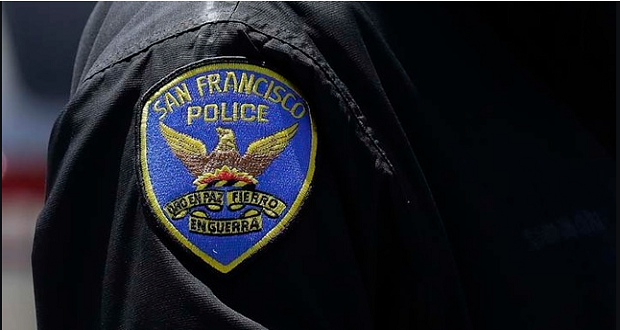 Only the thin and good looking work and shop at Abercrombie?
Only the thin and good looking work and shop at Abercrombie?
I have a great deal of respect for the progress that Todd Corley, Abercrombie’s Chief Diversity Officer, has made over the past 8 years during his tenure. When he joined the company in 2004, Abercrombie had just settled a $50 million class action discrimination law suit filed by former employees on the basis of race, gender and national origin.
Since that time, Abercrombie has increased its representation of people of color from under 10% to almost half. Its Hollister brand ranked number one among African American youth ages 8-15 in 2011. He has instituted innovative training using actors do demonstrate workplace situations.
Can all of this progress be wiped out when the slip of the tongue, or a couple three slips of the tongue, by a well-meaning, but perhaps not so culturally competent CEO, go viral?
I have no doubt that CEO Mike Jeffries and Corley are sincerely committed to diversity and inclusion. I also have no doubt that Jeffries would not intentionally take a position that he thought would jeopardize the brand and the company’s ability to succeed. Abercrombie and Fitch, a global 85,000 employee popular retailer, has again come under attack for pushing the envelope on what is okay to say or believe and still be considered pro diversity and inclusion.
Abercrombie’s diversity statement attributed to CEO Mike Jeffries reads as follows:
Diversity and inclusion are key to our organization’s success. We are determined to have a diverse culture, throughout our organization, that benefits from the perspectives of each individual.
Jeffries perspective has been interpreted in the media as “good looking, thin people” (women size 10 and under) are desired as employees and as customers. Taking a different approach than his major competitors H&M and American Eagle who carry sizes up to 16 and 18, Jeffries is credited with saying: “Abercrombie is only interested in people with washboard stomachs who look like they’re about to jump on a surfboard.”
In an interview with Forbes last year, CDO Todd Corley told the reporter, “At A&F we focus on three areas to drive ROI: First, in-store experience – high energy, good music, good looking people, diversity in our staff.” (So I would question if the increase in representation of people of color since 2004 is based on hiring good looking, thin people of color?)
It appears that “good looking people”, however that might be defined, are a part of Abercrombie’s branding and there are no specific laws that prohibit discrimination based on “looks”.
In response to and defense of the latest firestorm last week, Jeffries posted this on Abercrombie’s Facebook Page:
“A&F is an aspirational brand that, like most specialty apparel brands, targets its marketing at a particular segment of customers. However, we care about the broader communities in which we operate and are strongly committed to diversity and inclusion.”
All consumer companies target particular segments. It is just the way marketing is done. Lane Bryant is an example of a retailer that only carries plus sizes for women, so it could be argued that they discriminate against small sized women. No one would likely make such an argument because most realize that the world is set up to favor the very market that Abercrombie goes after.
There have been numerous studies that show unconscious bias persists on the basis of looks and size. Obese people, and people who are considered unattractive are less likely to be hired even with equal qualifications. As a matter of fact, “attractive people” will earn about $140,000 more over their working careers than those who are considered “unattractive”.
From my perspective this is a clear cut case of a lack of diversity competence. It is a situation that I see all too often, leaders who do not know what they do not know, well- meaning but unconsciously incompetent. When I wrote, CEO’s Who Get It, one of the key characteristics of the leaders featured in that book is that they understood relative to diversity and inclusion they were most likely unconsciously incompetent. Just that awareness advanced them to conscious incompetence, a place where they were now open to learning and understanding what they did not know.
Diversity and inclusion is complex, tough stuff. You have to be self-aware, understand your own biases, and learn to view the world from the other’s perspective in order to competently lead. We underestimate the amount of learning and education that it takes to develop such competencies.
Perhaps part of the incompetence is not defining diversity broadly enough and not being adept at seeing the other’s point of view. Jeffries has used adjectives and descriptions of Abercrombie’s target market that can be interpreted as judgmental and exclusionary. Some other companies get away with the same types of practices by using code words such as the “urban market”. We have all learned that urban is code for economically disadvantaged African Americans. Most marketers would not dare say we target “poor black people”. They know all too well, that would lead to much controversy and even legal action. Other companies send subliminal messages with their advertising and clothing designs to let us know who they are targeting. They don’t have to say anything. Consumers make their own judgments based on the images. The images sometimes, however, do come under attack as well for not exhibiting enough diversity.
If Abercrombie were simply to say they target the teen market, no one would complain. Perhaps if they advertised…”you will be cool if you wear our clothes”, they would not be under fire but when they start using judgmental statements like, we only want the “cool kids,” it sends a totally different message.
In a world where diversity is defined broadly to include such characteristics as appearance, physical stature, etc. we all have to learn to value, respect and most of all understand a broader range of difference. While Mr. Jefferies remarks were not likely intended to offend, it is obvious that the impact was to offend many, including some pretty high profile entertainers.
This is an excellent example of how a lack of diversity competence can negatively impact the brand, which in turn of course will impact the bottom line. I worry that Abercrombie may be losing the opportunity to hire great talent who may not score high enough on their attractiveness meter as well as potential customers who may not be “cool” enough or “thin” enough. I imagine that there will also be some “cool”, thin, “good looking” people who will no longer want to be associated with the brand.
Rather than boycott the brand, I would like to suggest we all “cut Mr. Jeffries some slack”. He is learning as we all are about how to be more inclusive. I hope this is a wake-up call not only to Abercrombie leadership but to all leaders that diversity and inclusion requires a lot of learning, with the first step being a deep understanding of self and then ongoing learning about others.



















An excellent, clear and well thought out article that aught to elevate the field and those professionals who encompass it.
Bob Ingram
Thanks, Bob. Appreciate your support.